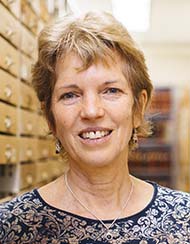How do we maintain local and regional biodiversity in the face of increasing global connectivity?
When we travel, we are running a kind of global dating game, unknowingly ferrying plants, insects and sometimes larger critters from one locale to another. Evolutionary biology tells us that specialized organisms usually become established in isolation from closely related species. But no place is truly isolated anymore. We are basically putting biodiversity in a blender and seeing what comes out, says insect ecologist Rosemary Gillespie. Sometimes what comes out are forests, once humming with bird and insect diversity, now hushed by intruders – non-native tree species smothering all the natives. The problem is complex. Gillespie considers islands as microcosms of larger ecosystems, and seeks to identify the ecological and evolutionary dynamics of these relatively simple systems. By measuring patterns of species diversity in ecosystems that differ in age and human impact, she says, we can start to understand what features of a natural community provide stability in the face of intrusions driven by climate change and other threats from our own species.
 Rosemary Gillespie
Rosemary Gillespie
Rosemary’s research focuses on understanding evolutionary patterns and processes among populations and species with a focus on islands, particularly remote hotspot islands of the Pacific. Hotspot archipelagoes allow us to examine how communities have changed over time and thus gain insight into the nature of processes shaping communities over evolutionary time. These archipelagoes make it possible to visualize snapshots of evolutionary history. Read more.
